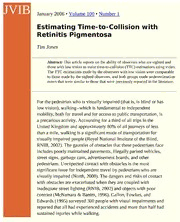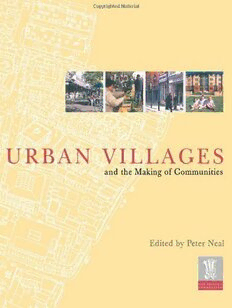
Urban Villages and the Making of Communities PDF
Preview Urban Villages and the Making of Communities
Urban Villages and the Making of Communities Edited by Peter Neal LONDON AND NEW YORK First published 2003 by Spon Press 11 New Fetter Lane, London EC4P 4EE Simultaneously published in the USA and Canada by Spon Press 29 West 35th Street, New York, NY 10001 Spon Press is an imprint of the Taylor and Francis Group This edition published in the Taylor & Francis e-Library, 2005. “To purchase your own copy of this or any of Taylor & Francis or Routledge’s collection of thousands of eBooks please go to www.eBookstore.tandf.co.uk.” © 2003 Selection, editorial matter and case studies: The Prince’s Foundation; individual chapters: the contributors © 2003 Foreword, His Royal Highness the Prince of Wales All rights reserved. No part of this book may be reprinted or reproduced or utilised in any form or by any electronic, mechanical, or other means, now known or hereafter invented, including photocopying and recording, or in any information storage or retrieval system, without permission in writing from the publishers. British Library Cataloguing in Publication Data A catalogue record for this book is available from the British Library Library of Congress Cataloging in Publication Data Urban Villages and the making of communities/edited by Peter Neal. p. cm Includes bibliographical references and index. 1. City planning. 2. Community Development, Urban. I. Neal, Peter, 1963 HT166.U7457 2003 307.1′216–dc21 ISBN 0-203-40277-4 Master e-book ISBN ISBN 0-203-40933-7 (Adobe eReader Format) ISBN 0-415-32124-7 (hb) ISBN 0-415-26273-9 (pb) Contents Foreword HRH The Prince of Wales v Notes on contributors vii Acknowledgements xii Illustration acknowledgements xiv Introduction An urban village primer 2 Peter Neal Authentic urbanism and the Jane Jacobs legacy 25 Roberta Brandes Gratz Part One The context for urban villages Introduction 45 1 Smart growth on two continents 48 Peter Hall 2 Planning for sustainable communities 71 David Lock 3 Emerging digital neighbourhoods 95 William J.Mitchell Part Two Design principles for urban villages Introduction 119 4 Neighbourhood design in practice 122 Andrés Duany 5 Connectivity and movement 149 David Taylor 6 The social dynamic 175 Ken Worpole iv Part Three Implementing urban villages Mike Hollingsworth, Ben Denton and Chris Brown Introduction 194 7 Project identification 197 8 Project procurement 221 9 Project management 259 Afterword 280 David Lunts Part Four A compendium of case studies Introduction 289 Urban retrofit and infill 1 The Jewellery Quarter, Birmingham 291 2 Little Germany, Bradford 297 3 Temple Bar, Dublin 303 4 King-Spadina, Toronto 310 Urban renewal and brownfield 5 The Pearl District, Portland 316 6 Crown Street, Glasgow 322 7 Bo01 Housing Expo, Malmö 330 8 Llandarcy South Wales 336 Urban extension and greenfield 9 Upton, Northampton 341 10 Poundbury, Dorset 347 11 Kirchsteigfeld, Potsdam 353 12 Newington, Sydney 359 References 365 Index 375 ST. JAMES’S PALACE Many have been inspired by the notion of the village in the city, not least by the example of London, with its numerous historic settlements, each congealing over time into a single metropolis, yet retaining a distinctive sense of locality and place. It was this characteristic—and the desire to see a revival of the principles behind it in relation to our built environment—which led me, some fifteen years ago, to start persuading people to think in terms of an urban village. This was an oxymoron I suppose, but a concept that nevertheless conjures a vision of neighbourhood, of conviviality and character, within an urban environment on a far broader scale than the rural village. It is a notion with a universal appeal, reflected in terms like quartier in France, or neighbourhood in the United States, suggesting a timeless and human scale to urban development, a form of urban planning that has a fresh relevance in the modern world. The original Urban Villages Forum, a group of planning, architectural and property experts that we brought together, took this idea and examined how it may offer clues for a new generation of urban planners. In a series of visits which I initiated and sometimes led, they began to look carefully at some of the outstanding examples of historic urbanism—in places like London’s Clerkenwell, Edinburgh’s New Town, Charleston, South Carolina and parts of Paris. The group, under the chairmanship of Trevor Osborne, produced a book, entitled ‘Urban Villages’ published in 1992, that I’m afraid was greeted by many professionals as well-intentioned, but rather naïve! Yet the years since its publication have challenged some of the sceptics and, indeed, have brought the term urban village into common use. I am pleased to see that the concept now even enjoys favour in many official planning policies. The original Urban Villages Forum has developed into a highly regarded projects team, and a network of practitioners, that spans the United Kingdom and beyond. The Forum is now incorporated within my own charitable Prince’s Foundation where it works with national, regional and local organisations to bring about examples of the urban village in practical projects, some of which are featured in the pages that follow. This welcome renewal of interest in many of the features of the urban village, has particularly focused on the need for more mixed developments, for a more vi efficient use of land and on the need for the imaginative regeneration of many areas of urban dereliction and blight. On greenfield sites, too, there has also been a keen interest in using the urban village as a model for the sensitive and sustainable extension of historic towns where development pressure cannot be met on brownfield sites alone. My own efforts, on land owned by the Duchy of Cornwall at Poundbury, on the edge of Dorchester, have proved that it is perfectly possible, both technically and commercially, once again to build places that can stand proudly alongside some of the finest historic settlements; places that will not become blots on either our landscapes or townscapes, and where factories and shops can be happily interspersed with homes for rent and sale, along streets that are shared by pedestrians and vehicles. And, of course, it is important to remember that one of the most crucial, underlying features of the urban village is that it is designed with the pedestrian, not the car, as the primary priority. This new book brings together some of the keenest minds and most creative practitioners to explore both the theory of the urban village and its practical application. I am extremely pleased that it is able to include contributions not just from the United Kingdom, but also from the United States where the New Urbanism’ is so successfully showing how the principles behind the urban village can help prevent sprawl and regenerate neglected cities. My thanks go to all the contributors. I am also very grateful to Spon Press, the publishers of this collection, and to Clear Channel Communications who have generously sponsored the book. I hope that it serves to stimulate not just discussion, but also practical project work that can help to establish the wholesale revival in traditional, or sustainable, urbanism that is so desperately overdue if we are to design urban habitats fit for the future. Notes on contributors Peter Neal Peter Neal is a landscape architect and urban designer specializing in urban regeneration and the public realm. Initially trained at Manchester University, he completed a Master’s degree in Landscape Planning and Ecology at Harvard University’s Graduate School of Design. He has worked with several design consultancies, including The ROMA Design Group in San Francisco and EDAW in London. He completed work on this book as part of a research post with The Prince’s Foundation in which he looked at best practice in mixed-use urban development and regeneration. He currently manages the Enabling and Delivery Team of Cabe Space, part of the Commission for Architecture and the Built Environment. Roberta Brandes Gratz Roberta Brandes Gratz is an award-winning journalist and urban critic, lecturer and author of The Living City: Thinking Small in a Big Way, and Cities Back from the Edge: New Life for Downtown. She is an international lecturer on urban development issues and former award-winning reporter for the New York Post. In 2001, the Rockefeller Brothers Fund published her report, A Frog, A Wooden House, A Stream and A Trail: Ten Years of Community Revitalization in Central Europe, which she is now converting into a full-length book. She is a native and resident of New York City and her articles have appeared in numerous publications including the Wall Street Journal, New York Times Magazine, The Nation, Tikkun, Planning Magazine, New York Newsday, the Daily News and the Planning Commissioners Journal. She was a member of the New York Governor’s and Mayor’s Task Force on Planning Manhattan’s West Side Highway and Waterfront. She founded the Eldridge Street Project to restore the first synagogue on Manhattan’s Lower East Side built by East European Jews and has been appointed by Mayor Bloomberg as one of 11 commissioners on the NYC Landmarks Preservation Commission. Peter Hall Peter Hall is Professor of Planning at the Bartlett School of Architecture and Planning, University College London, and Director of the Institute of viii Community Studies. From 1991 to 1994 he was Special Adviser on Strategic Planning to the Secretary of State for the Environment. In 1998–99 he was a member of the Deputy Prime Minister’s Urban Task Force. He received his Master’s and Ph.D. degrees from the University of Cambridge and has taught at the London School of Economics, served as Dean of the Faculty of Urban and Regional Studies, University of Reading (1968–88) and was Professor Emeritus of City and Regional Planning at the University of California at Berkeley (1980– 92). He is author or editor of more than 30 books on urban and regional planning and related topics. He has received the Founder’s Medal of the Royal Geographical Society for distinction in research, is an honorary member of the Royal Town Planning Institute and was knighted in 1998 for services to the Town and Country Planning Association. David Lock David Lock is chairman and managing director of David Lock Associates Ltd, a practice of planners and urban designers in Milton Keynes and Melbourne, Australia. He is also chairman of DLA Architects Practice Ltd and a director of Integrated Transport Planning Ltd and of Rapid Transport International Plc. He was Chief Planning Adviser (half-time) to the Department of the Environment from 1994 to 1997, and is Visiting Professor in the Centre of Planning Studies at Reading University’s School of Business. He is chairman of the Town and Country Planning Association and chair of the environmental education charity City Discovery based in Milton Keynes. He also acts as an expert adviser on regional planning and transport strategies in Northern Ireland. William J.Mitchell William J.Mitchell is Professor of Architecture and Media Arts and Sciences, Head of the Media Arts and Sciences Program and Dean of the School of Architecture and Planning at MIT. He teaches courses and conducts research in design theory, computer applications in architecture and urban design, and imaging and image synthesis. A Fellow of the Royal Australian Institute of Architects, he has taught previously at Harvard’s Graduate School of Design and at UCLA. His publications include City of Bits, E-topia, and the forthcoming Me ++: The Cyborg Self and the Networked City, all published by the MIT Press. He is a Fellow of the Royal Australian Institute of Architects and Fellow of the American Academy of Arts and Sciences. Andrés Duany Andrés Duany is a principal of Duany Plater-Zyberk & Co., a leading organization in the New Urbanism that seeks to end suburban sprawl and urban disinvestment. DPZ first received recognition as the designers of Seaside, Florida, and have since completed designs for over 200 new towns, regional plans and community revitalization projects. Andrés Duany received his undergraduate degree in architecture and urban planning from Princeton University and studied for a year at the Ecole des Beaux Arts in Paris before ix completing a Master’s degree in architecture from the Yale School of Architecture. He has received honorary doctorates from Rollins College and the University of Pennsylvania, as well as the Brandeis Award for Architecture, the Thomas Jefferson Memorial Medal of Architecture from the University of Virginia and the Vincent Scully Award from the National Building Museum. He is a Fellow of the American Institute of Architects and a founder and a member of the board of directors of the Congress for the New Urbanism. David Taylor David Taylor is a partner of Alan Baxter & Associates. He leads project work on urban design, transport and movement, with a particular interest in advancing the creative engineering and holistic approach that the practice brings to projects. He has led the authorship of many publications on urban design, including Places, Streets and Movement, a companion guide to Design Bulletin 32, which was the first guide published as part of the government’s integrated transport campaign. Its aim is to promote developments in which the design and layout encourage people to walk, cycle or travel by public transport rather than use the car. Paving the Way, published in 2002 by the Commission for Architecture in the Built Environment, highlights the impediments to achieving successful streetscapes in urban environments and sets out 12 action points for the future. David Taylor’s team has also contributed the engineering aspect to The Urban Design Compendium and Better Places to Live. The principles established within this work on strategic guidance are taken through to the many projects that the practice is dealing with in the UK and Europe. Ken Worpole Ken Worpole is one of Britain’s most influential writers on urban and social policy, and the author of many seminal books and reports. He has travelled and lectured extensively in Europe and Australia. In 1999 he was awarded an honorary doctorate by Middlesex University for his work on social policy. He has worked as an independent researcher and writer and has been principally associated with two leading research and policy think tanks in the UK, Comedia and Demos. He is particularly interested in issues associated with the quality of contemporary urban life, new forms of civil society, and the planning and design of urban landscapes and institutions that support more convivial forms of democracy. In 2001 he was appointed to the UK Government’s Urban Green Spaces Task Force. His most recent books include Here Comes the Sun: architecture and public space in 20th century European culture (Reaktion Books, 2001) and Last Landscapes: the architecture of the cemetery in the West (Reaktion Books 2003). Mike Hollingsworth Mike Hollingsworth is planning director in the Land Development and Legal Services Division of the Welsh Development Agency (WDA), which works in
The list of books you might like

Better Than the Movies

The 5 Second Rule: Transform your Life, Work, and Confidence with Everyday Courage

The Subtle Art of Not Giving a F*ck

The 48 Laws of Power
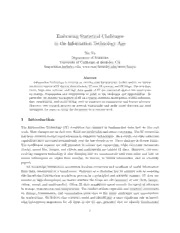
DTIC ADA446888: Embracing Statistical Challenges in the Information Technology Age

Алгебра. 8 класс
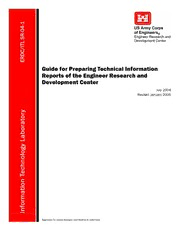
DTIC ADA445281: Guide for Preparing Technical Information Reports of the Engineer Research and Development Center
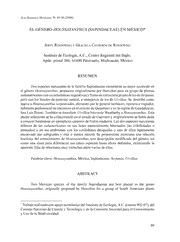
El género Houssayanthus (Sapindaceae) en México
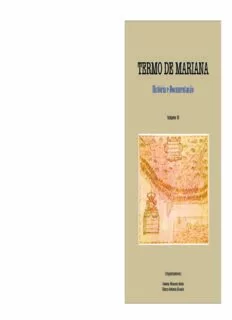
C APA TERMO DE MARIANA.cdr
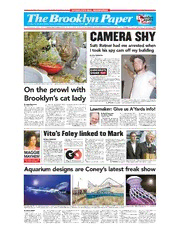
The Brooklyn Paper Volume 29 Issue 40
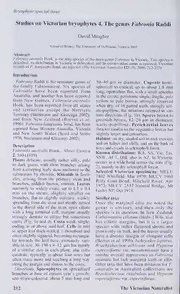
Studies on Victorian Bryophytes 4. The Genus 'Fabronia' Raddi

CRS 5: Labelling of Pre-packaged Foods
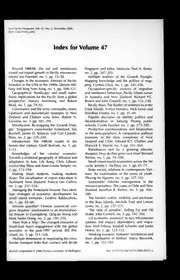
Asia Pacific Viewpoint 2006: Vol 47 Index
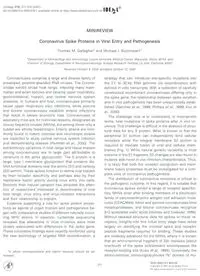
2001 Coronavirus Spike Proteins in Viral Entry and Pathogenesis
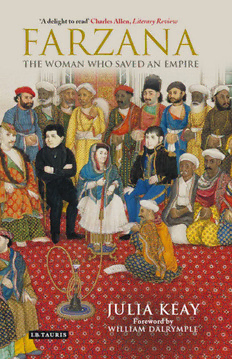
Farzana the woman who saved an empire
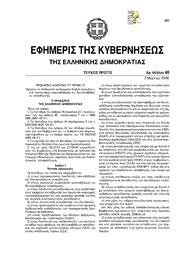
Greek Government Gazette: Part 1, 2006 no. 48
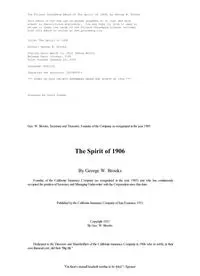
Etext of The Spirit of 1906 by George W Brooks
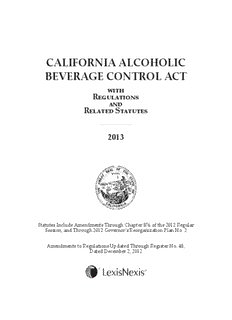
CALIFORNIA ALCOHOLIC BEVERAGE CONTROL ACT - California ABC - Homepage

So Many Worlds Away by Dwight V Swain


![ERIC ED495088: U. S. Intel[R] Teach to the Future Essentials Course: 2006 End of School Year Survey. Key Findings book image](https://cdn.pdfdrive.to/media/content/thumbnails/ae4a90db-8ebb-4369-ad81-e2c759129109.webp)
